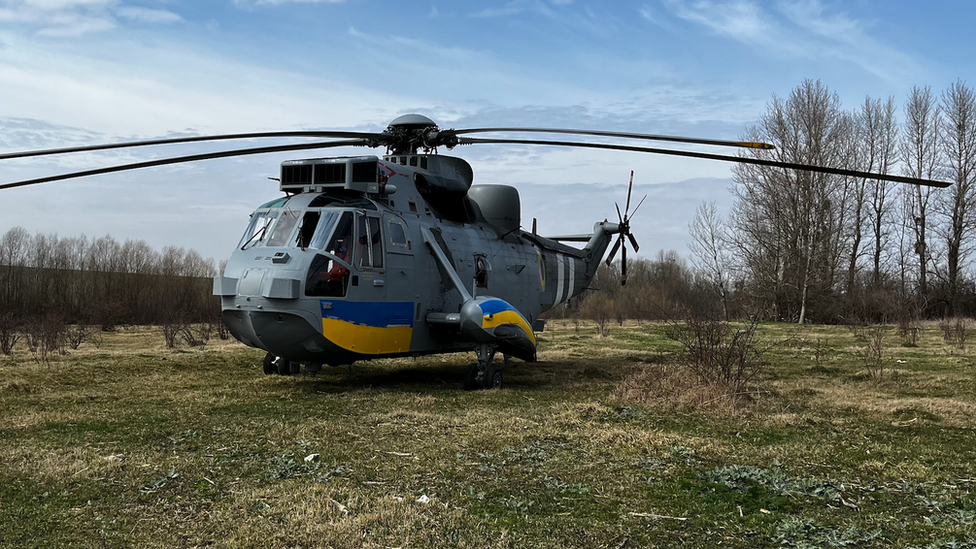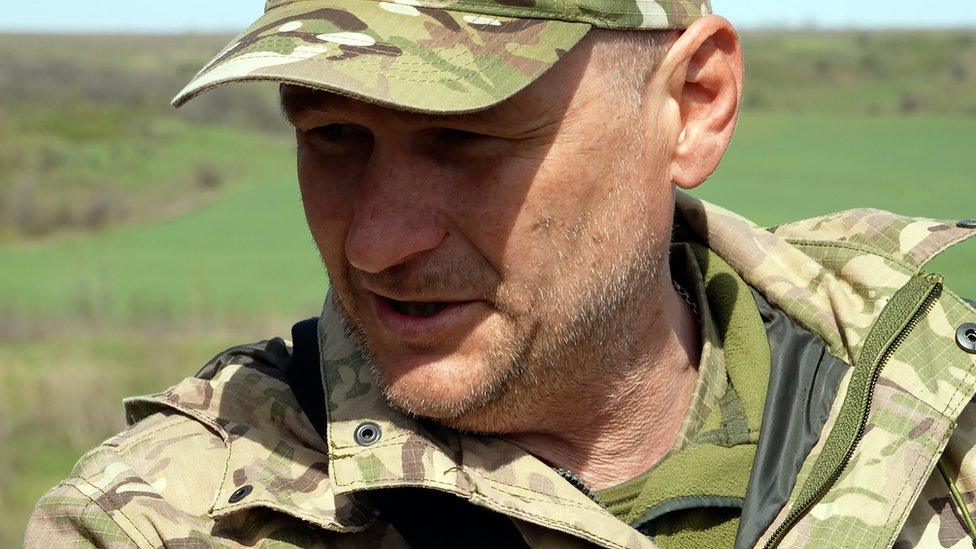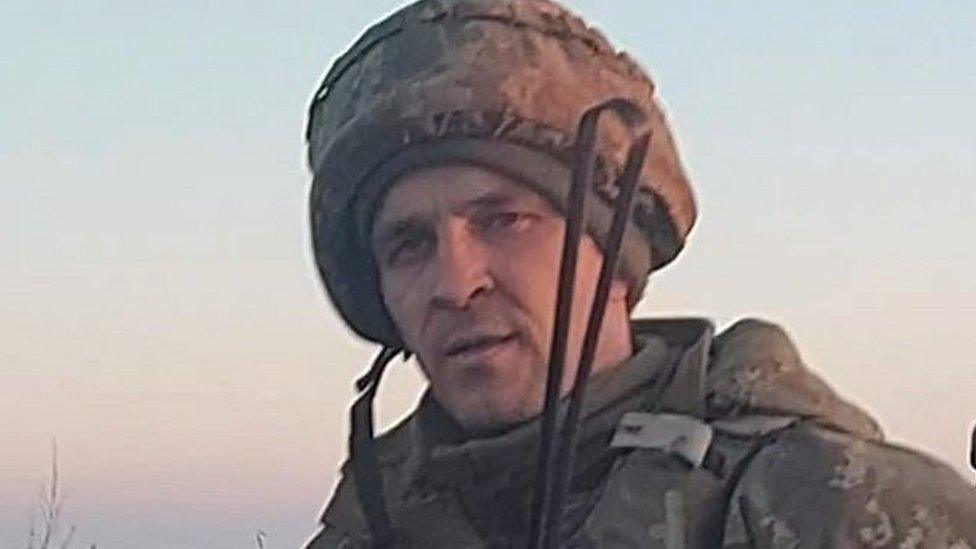Ukraine war: How old tech is helping Ukraine avoid detection
- Published

Ukrainian troops along the eastern front line are aware of Russia's ability to intercept or block communications
As Ukraine prepares for its major offensive, it will only get harder to hide the troop build up from Russia's forces. So Ukraine is having to work out ways to confound the enemy.
In a trench on the eastern front, a Ukrainian mortar team knows Russia's not just trying to hunt them down with drones - it's also using electronic warfare to try to locate their position.
The men of Ukraine's 28th Brigade may have access to 21st Century technology - satellites, smart phones, and tablets - to help communicate and identify targets. But they're also using a machine from the distant past.
An antique that wouldn't look out of place in a trench during World War One: an old wind-up phone.
Vlad and his men pick up the field phone whenever they're about to fire a mortar. Its dull ring makes a sound from a bygone era. For outgoing calls, they must wind up a handle. It's like a scene from a black and white movie.
Vlad grabs the cables that reach out to other nearby trenches. He says it's the safest means of communication, and that "it's impossible to listen in".
He says Russian electronic warfare systems can detect and intercept mobile phones and radios, but pointing to his ancient field telephone, Vlad says: "This technology is very old - but it works really well."

Vlad says the wind-up phone he uses is the safest means of communication
So far, Russia's conventional forces have performed poorly and suffered heavy losses, but it still has some of the world's most advanced electronic warfare systems - the invisible means to track an enemy and to intercept or block communications.
In fixed defensive positions they'll make Ukrainian advances more dangerous and difficult. Russia's Zoopark radars can locate artillery fire. Its Zhitel vehicles detect, track and block radio frequencies, while the Borisoglebsk-2 can disrupt satellite communications like GPS.
Russia's use of electronic warfare is also making it harder for Ukraine's army of drones - key to getting a bird's eye view of the battlefield.
At another location on the eastern front, Oleksii and his drone intelligence unit of the 59th Brigade use the cover of a bombed out building to fly their small Chinese commercial drone to identify Russian positions.
In the early stages of the war, Ukraine appeared to be more adept in their use. But Oleksii says now "the sky is full of drones". He says the Russians, too, are using the same models, but have more of them. Though he believes they "care less about them".
Oleksii says he's already lost five small Chinese-made drones and his Brigade "might lose three to four drones a day". He says the enemy have access to radio-electronic warfare stations and anti-drone guns which "can transmit interference and interrupt communications" to disable their drones.
But in skilful hands, he adds, a small commercial drone like a Mavic can last "between two and three weeks".
They try their best to avoid detection - using encryption and altering their drone's geolocation. The one he's flying over Russian trenches is using a VPN in Australia, meaning it appears to be flying around the southern continent. But he says the disguise doesn't always work.
Russia has the resources... to fly drones every day, every hour, every second

In contrast, Ukraine's efforts to bring down Russian drones can be more rudimentary - as we witnessed at another position.
Ukrainian troops point to a drone flying high in the distance. It's an Orlan - a larger, Russian-made drone that can carry out surveillance or intercept communications. This time it's scouting out nearby Ukrainian defensive positions to direct artillery fire.
We hear the whizz of the shells before seeing the impact and smoke rising in the distance.
The response of the nearby Ukrainian troops is to open up with a hail of bullets toward the sky, fired from their automatic rifles. But the Russian drone is too high. In this instance, their gunfire is futile.
In a nearby command centre, Bohdan, of Ukraine's 10th Brigade, expresses his frustration that they can't do more. He says Russian drones are flying "every day, every hour, every second. They have the resources for that. We fight against it but not as much as we'd like."
The large screen behind him though shows that Ukraine is still able to do the same - even if they must now consider their drones as expendable items of war.
We watch a live video feed from a Ukrainian drone hovering over nearby trenches. Russia may have the advantage in electronic warfare and more drones - they'll provide a challenge for Ukraine's coming offensive.
But Russia has not yet been able to gain control of the skies, or defeat Ukrainian resistance and ingenuity.
Related topics
- Published13 April 2023

- Published27 April 2023

- Published22 April 2023
